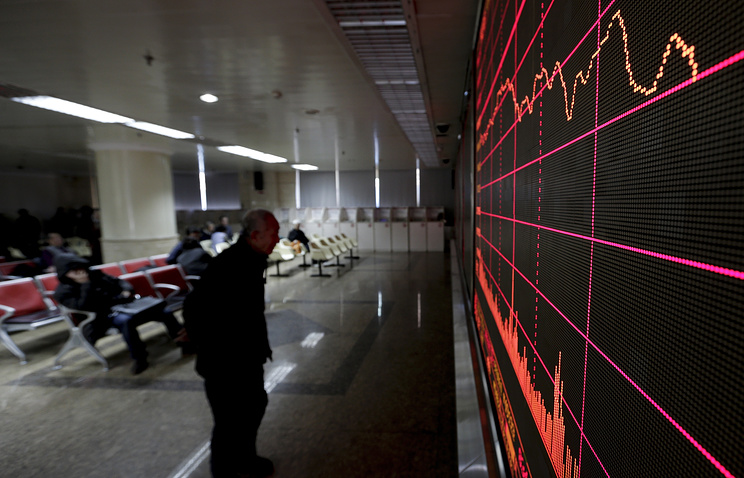The Russian economy is expected to pass the crisis peak in the second half of 2016 and to recover starting 2017, says the World Bank report. GDP growth is projected at 1.5% in 2017, 1.7% in 2018. The World Bank has also upgraded Russia’s GDP outlook for 2016 to minus 0.6% from minus 1.2%. According to the report, consumption spurred by wage rise will again become the key economic driver in Russia in 2017-2018.
According to the report, the resumption of Russian federal budget planning practices for the three-year period will reduce the uncertainty of the economic policy and improve investor climate.
“Bolstering investor sentiment towards Russia by reducing policy uncertainty will help. One important step forward, particularly in light of eroding fiscal buffers with the Reserve Fund expected to be depleted in 2017, is a return of the medium-term fiscal framework,” the report said.
Also, according to the World Bank, over recent years, Russia has accomplished many positive changes across multiple areas of business regulation, helping improve its investment climate. “These are necessary though not sufficient – despite the substantial changes in the role of the state in recent decades, the ownership of productive assets has become even more concentrated, reducing competition and impairing corporate governance,” the report said.
Russian Finance Minister Anton Siluanov said earlier that returning to the three-year budget gives investors and population of the country stability and provides clearer view on Government’s policy in the mid-term.
Tightening of the budget policy by the Russian government may have a negative impact on two thirds of the regions due to cuts of transfers.
“Fiscal tightening at the federal level may also adversely affect the performance of some regions. Fiscal constraints can lead to a cut in transfers to subnational governments, affecting two-thirds of Russian regions where federal transfers constitute 15 to 50% of revenue. Concerns about debt levels will make it difficult for many local governments to support expenditures,” the report said.
The World Bank sees no major impact of import substitution on Russia’s economic growth so far.
“Overall, import substitution seems to have a limited impact on growth and redistribution of production factors so far. The partial cyclical recovery on the back of rising oil prices is unlikely to go hand in hand with a reallocation to higher value added non-oil activities,” the report said.
In addition, according to the World Bank, the diversification process advances slowly due to a relatively low level of spare capacity in most tradable sectors and limited availability of labor, including structural and institutional constraints that need to be lifted first.
According to the World Bank, while exports have expanded in some non-oil sectors, such as textiles, wood processing, metals and metal goods, and agriculture, which grew at 1.5% in the first half of 2016, the total value of non-oil exports of goods decreased by 13.4% in the first 9 months of 2016. Sectors that constitute slightly more than half of non-oil exports were contracting in the first half of 2016.
The World Bank expects further consolidation of banking sector in Russia.
“The Central Bank has continued its efforts to clean up the banking system in 2016, cutting the number of banks that are non-compliant with regulations and that conduct risky operations, leading to an erosion in their capital base. The number of banks in Russia has fallen from 733 in the beginning of 2016 to 649 as of October 1, 2016, and further consolidation is expected,” the report said.
Consumer inflation will slow down further on and slip below 6% by the end of this year.
“Consumer price inflation is expected to continue moderating, falling below 6% y-o-y by the end of 2016 (averaging at about 7.1%) and reaching 4% by the end of 2017. As a result, lower inflation, combined with improved credit conditions and a somewhat stronger ruble, will help increase households’ purchasing power and consumption growth will recover to 2.0% and 1.6% in 2017 and 2018, respectively,” the report said.
As for the average crude price, it is expected tol stand at $43 per barrel in 2016, $55 per barrel in 2017.
“And as oil and gas prices are projected to continue recovering to $55.2/bbl in 2017 and $59.9/bbl in 2018 and positively affect domestic demand, we forecast the economy to start inching towards growth of 1.5% in 2017 and 1.7% in 2018,” the report said.
According to the World Bank’s forecast, the average crude oil price at $43 means a 15% decline in comparison with 2015.
Apurva Sanghi, World bank’s lead economist for Russia, suggests that Russia should raise the retirement age in the mid-term.
Poverty rate
The World Bank also said that Russia’s fiscal policy allowed for better retribution of revenues among population than in the US but less than in the EU.
“Russia’s fiscal policy is more redistributive than the United States’ but less so than the EU’s. Since the crisis in 2009, fiscal transfers-mostly due to increases in pensions-have played a much more critical role than rising labor incomes in sustaining income growth for households,” the report said.
The report runs that Russia’s poverty rate is going to decline from 13.3% in 2015 to 13% in 2016.
“Despite the projected contraction of private consumption, the poverty rate is likely to go down in 2016 to a level of 13% compared to 13.3% in 2015. Nominal incomes for the majority of the population will grow faster than the poverty line, bringing more people out of poverty. Prices of products are expected to grow at a much slower pace in 2016 given the jump in prices in early 2015,” the report said.
